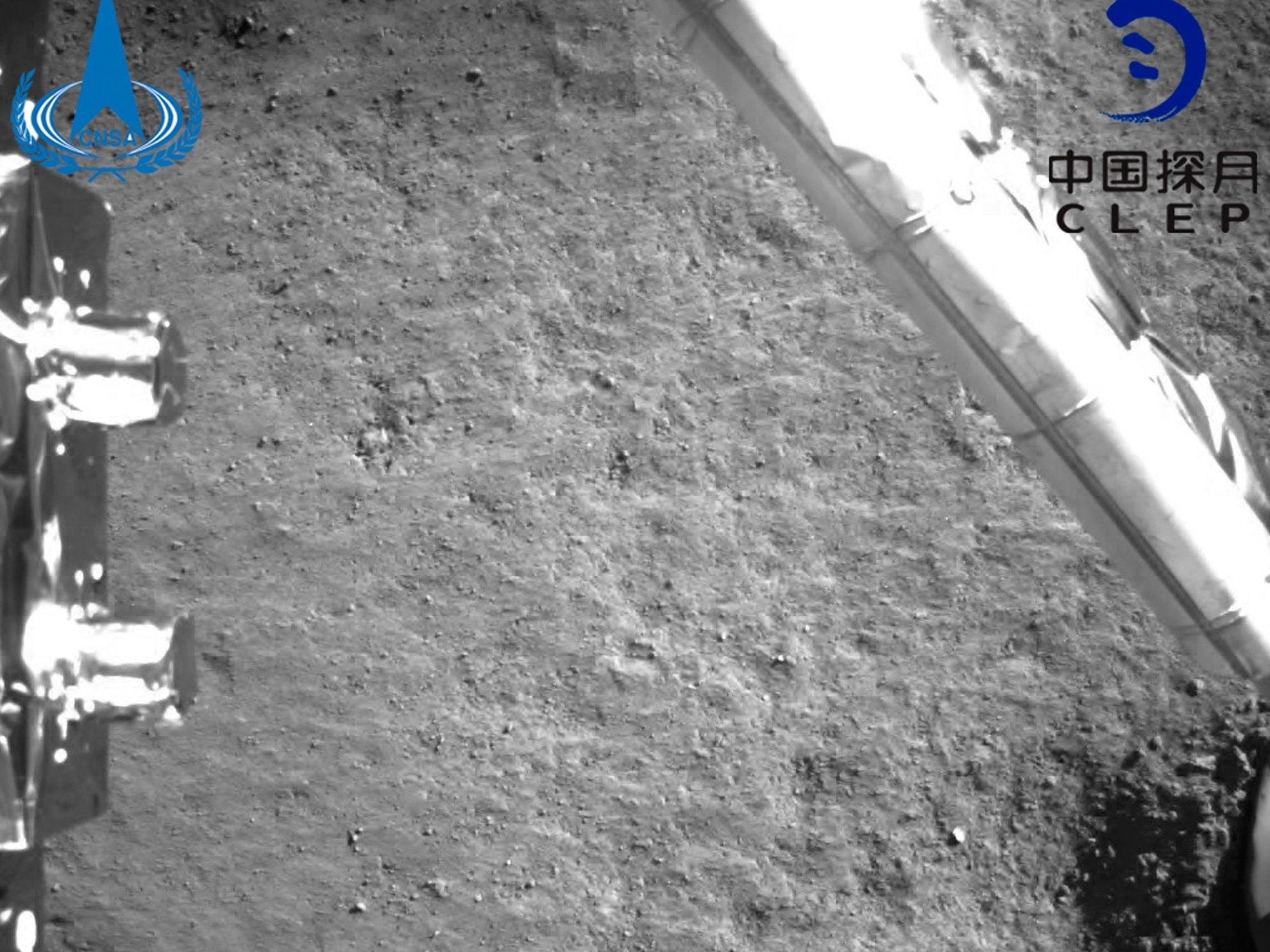Chang’e-4 landing: Chinese spacecraft sends first ever pictures back to Earth taken on far side of moon
Landing hailed as historic first in country’s space programme
Your support helps us to tell the story
From reproductive rights to climate change to Big Tech, The Independent is on the ground when the story is developing. Whether it's investigating the financials of Elon Musk's pro-Trump PAC or producing our latest documentary, 'The A Word', which shines a light on the American women fighting for reproductive rights, we know how important it is to parse out the facts from the messaging.
At such a critical moment in US history, we need reporters on the ground. Your donation allows us to keep sending journalists to speak to both sides of the story.
The Independent is trusted by Americans across the entire political spectrum. And unlike many other quality news outlets, we choose not to lock Americans out of our reporting and analysis with paywalls. We believe quality journalism should be available to everyone, paid for by those who can afford it.
Your support makes all the difference.A Chinese spacecraft has sent the first ever close-up pictures back to Earth from the far side of the moon, after also becoming the first probe to make a successful landing there.
The Chang’e-4 lunar probe touched down on Thursday, China’s space agency said, hailing the event as a historic first in the country’s space programme.
The spacecraft, launched in December, made the “soft landing” at 2.26am GMT and transmitted the first ever “close range” image of the dark side of the moon, the China National Space Administration said.
The moon is tidally locked to Earth, rotating at the same rate as it orbits our planet, so its far side – or “dark side” – is never visible to us. Previous spacecraft have seen the far side, but none have landed on it.
The landing “lifted the mysterious veil” of the far side of the moon and “opened a new chapter in human lunar exploration”, the agency said in a statement on its website, which included a wide-angle colour picture of a crater from the moon’s surface.

The probe, which has a lander and a rover, touched down at a targeted area near the moon’s south pole in the Von Karman Crater after entering the moon’s orbit in mid-December.
The tasks of the Chang’e-4 include astronomical observation, surveying the moon’s terrain, landform and mineral makeup, and measuring the neutron radiation and neutral atoms to study the environment of its far side.
In a tweet, Nasa’s administrator, Jim Bridenstine, praised China for its “impressive accomplishment”.

“Congratulations to China’s Chang’e-4 team for what appears to be a successful landing on the far side of the Moon. This is a first for humanity and an impressive accomplishment!”
The landing is a milestone for China in its race to catch up with Russia and the US and become a major space power by 2030. Beijing plans to launch construction of its own manned space station next year.
While China has insisted its ambitions are purely peaceful, the US Defence Department has accused it of pursuing activities aiming to prevent other nations from using space-based assets during a crisis.

Besides its civilian ambitions, China has tested anti-satellite missiles, and the US Congress has banned Nasa from two-way cooperation with its Chinese counterpart over security concerns.
As competition accelerates in space, Donald Trump seeks to create a new “Space Force” by 2020, as the sixth branch of the military.
But the private space race is also heating up, as numerous companies aim to commercialise space travel, such as California-based SpaceX, which has upended the industry with its low-cost reusable Falcon 9 rockets.
The US is the only country to have landed humans on the moon, and Mr Trump said in 2017 he wanted to return astronauts to the lunar surface to build a foundation for an eventual Mars mission.
Nasa administrators have said people could be put on Mars by as soon as the mid-2030s, with the agency having landed eight spacecraft there, the most recent in November.
As soon as 2022, NASA expects to begin building a new space station laboratory to orbit the moon, as a pit stop for missions to distant parts of the solar system.
In 2003, China became the third country to put a man in space with its own rocket after the former Soviet Union and the US, and in 2017 it said it was preparing to send a person to the moon.
China completed its first lunar “soft landing” in 2013, but its “Jade Rabbit” rover began malfunctioning after several weeks.
Additional reporting by Reuters

Join our commenting forum
Join thought-provoking conversations, follow other Independent readers and see their replies
Comments